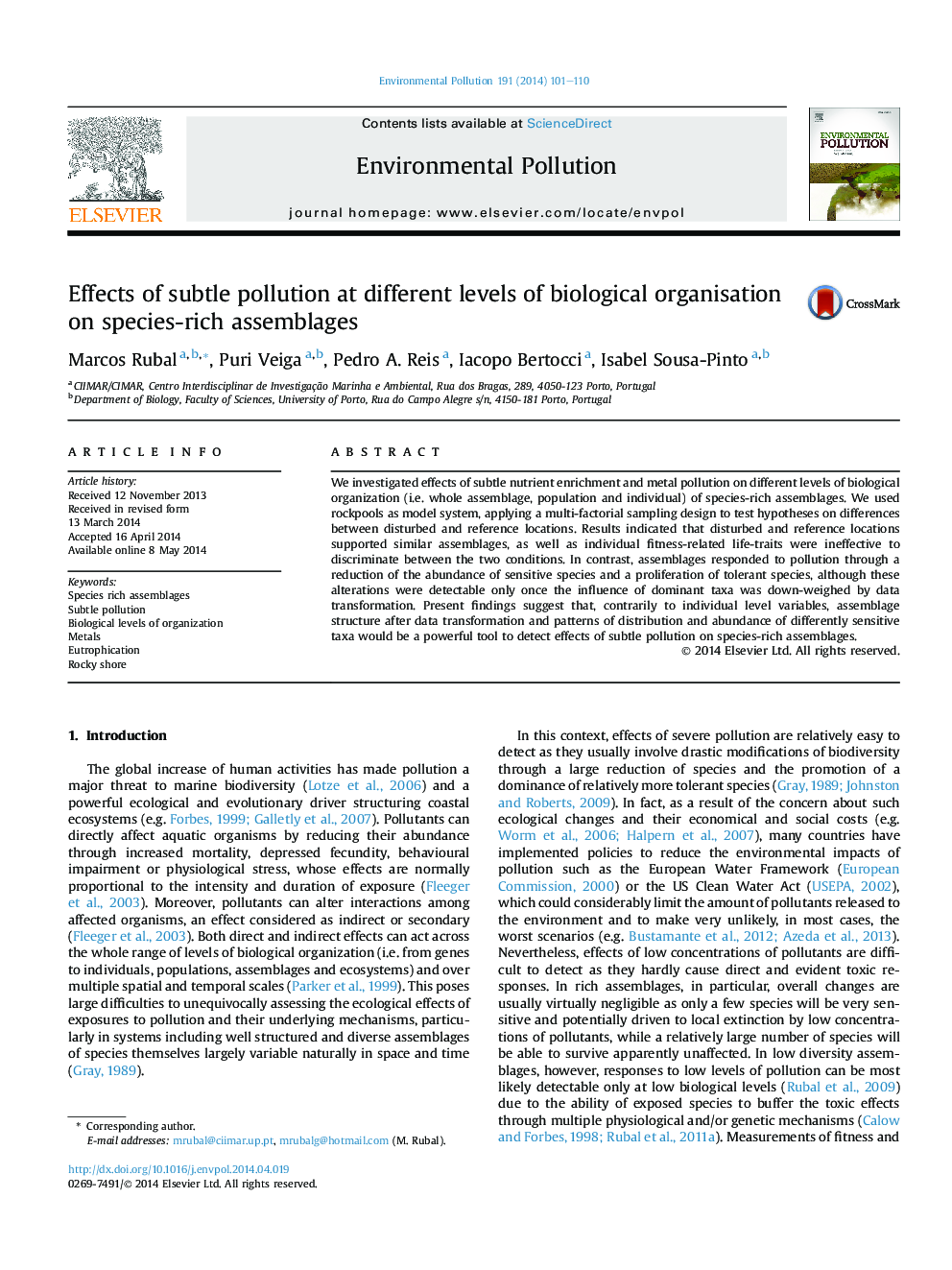| Article ID | Journal | Published Year | Pages | File Type |
|---|---|---|---|---|
| 4424432 | Environmental Pollution | 2014 | 10 Pages |
•Disturbed and reference localities supported similar assemblages.•Data transformation was necessary to detect pollution effects on assemblages.•Sensitive canopy species were substituted by turf and mussels.•Fitness-related life-traits were ineffective to discriminate pollution effects.
We investigated effects of subtle nutrient enrichment and metal pollution on different levels of biological organization (i.e. whole assemblage, population and individual) of species-rich assemblages. We used rockpools as model system, applying a multi-factorial sampling design to test hypotheses on differences between disturbed and reference locations. Results indicated that disturbed and reference locations supported similar assemblages, as well as individual fitness-related life-traits were ineffective to discriminate between the two conditions. In contrast, assemblages responded to pollution through a reduction of the abundance of sensitive species and a proliferation of tolerant species, although these alterations were detectable only once the influence of dominant taxa was down-weighed by data transformation. Present findings suggest that, contrarily to individual level variables, assemblage structure after data transformation and patterns of distribution and abundance of differently sensitive taxa would be a powerful tool to detect effects of subtle pollution on species-rich assemblages.
